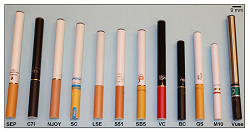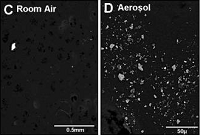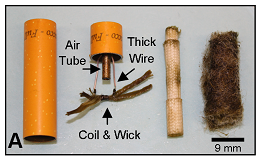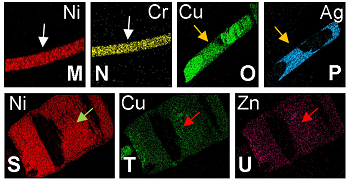Electronic Cigarettes
Electronic cigarettes are battery powered devices that heat a nicotine-containing solution to create an aerosol that can be inhaled by the user. Our lab has studied electronic cigarettes from various perspectives including their performance, topography, and cytoxicity using a variety of methods. Because they do not burn tobacco, electronic cigarettes are often considered safer than conventional cigarettes. However, there is not currently enough data on them to know what positive or negative effects they may have on health. Our overall goal in this area of research is to understand their short and long term effects on human health.
Selected Publications
Metal and Silicate Particles Including Nanoparticles Are Present in Electronic Cigarette Cartomizer Fluid and Aerosol
Williams M, Villarreal A, Bozhilov K, Lin S, Talbot P. PLoS One. 2013.
Electronic cigarettes (EC) deliver aerosol by heating fluid containing nicotine. Cartomizer EC combine the fluid chamber and heating element in a single unit. Because EC do not burn tobacco, they may be safer than conventional cigarettes. Their use is rapidly increasing worldwide with little prior testing of their aerosol.
Cartomizer contents and aerosols were analyzed using light and electron microscopy, cytotoxicity testing, x-ray microanalysis, particle counting, and inductively coupled plasma optical emission spectrometry.
The filament, a nickel-chromium wire, was coupled to a thicker copper wire coated with silver. The silver coating was sometimes missing. Four tin solder joints attached the wires to each other and coupled the copper/silver wire to the air tube and mouthpiece. All cartomizers had evidence of use before packaging (burn spots on the fibers and electrophoretic movement of fluid in the fibers). Fibers in two cartomizers had green deposits that contained copper. Centrifugation of the fibers produced large pellets containing tin. Tin particles and tin whiskers were identified in cartridge fluid and outer fibers. Cartomizer fluid with tin particles was cytotoxic in assays using human pulmonary fibroblasts. The aerosol contained particles >1 µm comprised of tin, silver, iron, nickel, aluminum, and silicate and nanoparticles (<100 nm) of tin, chromium and nickel. The concentrations of nine of eleven elements in EC aerosol were higher than or equal to the corresponding concentrations in conventional cigarette smoke. Many of the elements identified in EC aerosol are known to cause respiratory distress and disease.
The presence of metal and silicate particles in cartomizer aerosol demonstrates the need for improved quality control in EC design and manufacture and studies on how EC aerosol impacts the health of users and bystanders.
Images



